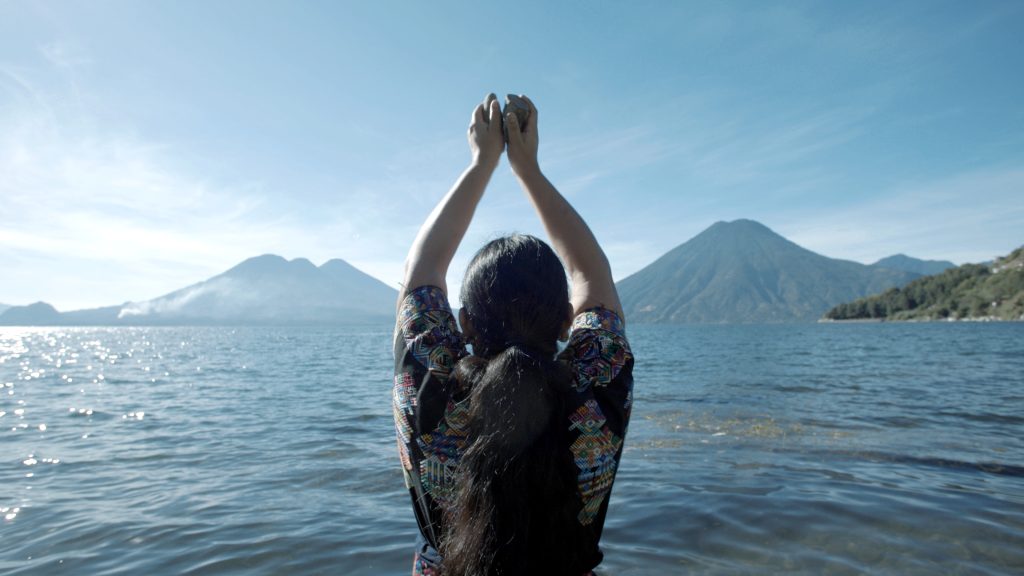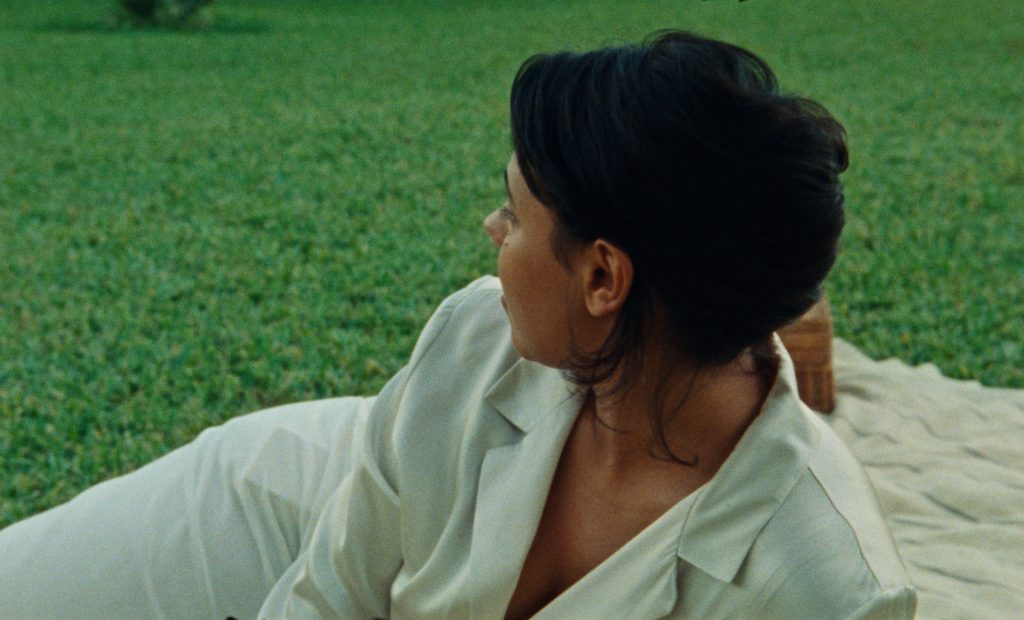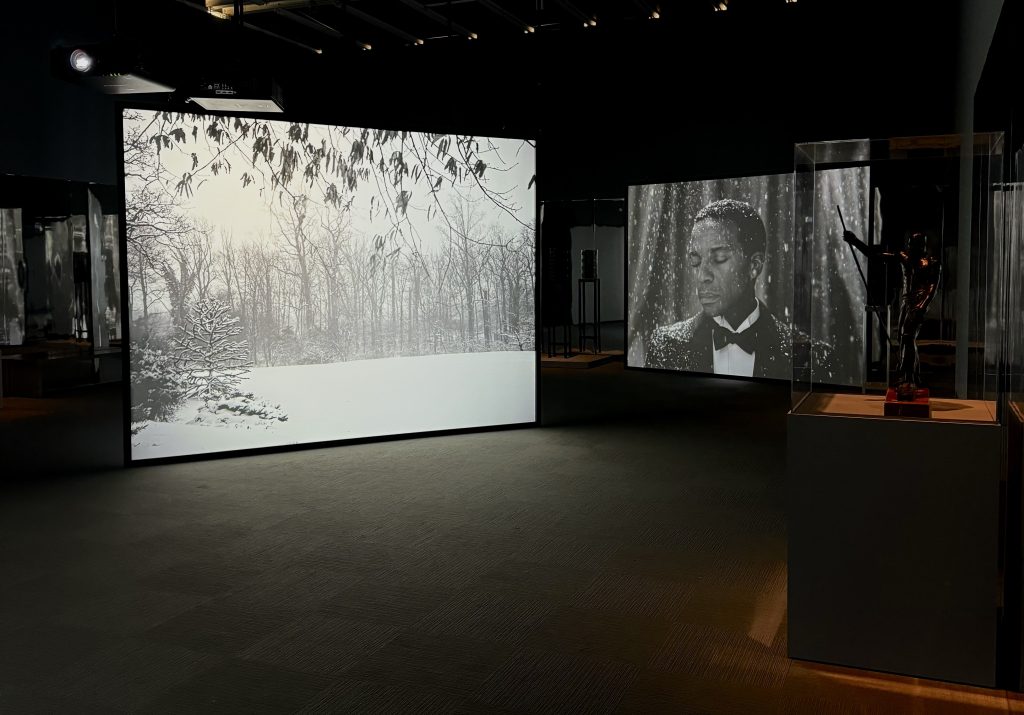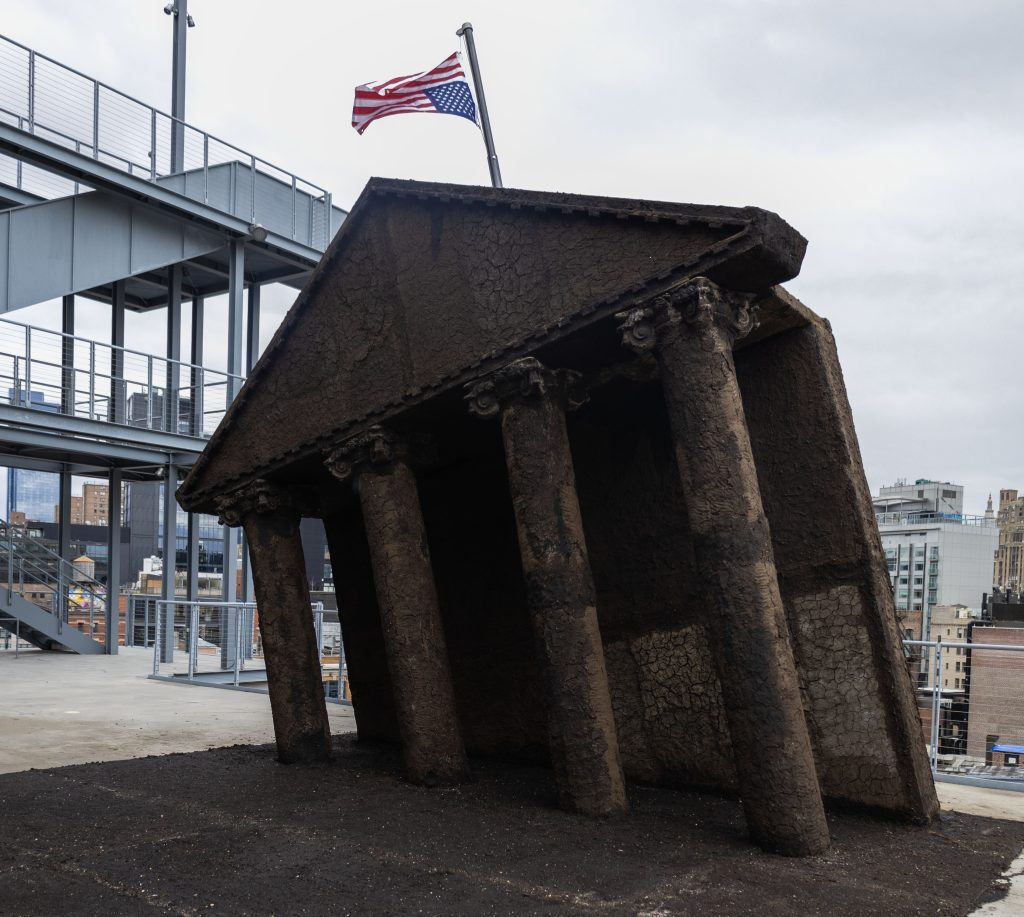By now, I’ve had a lot of time to think about this year’s edition of the Whitney Biennial, which partially concluded on August 11, with some of the art remaining on view through late September. It kicked off in March.
The regularly held exhibition is a project of the Whitney Museum of American Art in New York City, which I tend to think of in conjunction with the Museum of Modern Art and the Metropolitan Museum of Art, both also in the city — and all three grouped together in the 1942 painting “The Cathedrals of Art” by Florine Stettheimer. (The Met makes an image of the painting available online at this link.)
The Biennial, This Time Around
This year, the Whitney’s high-profile, recurring exhibition, which treks the landscape of contemporary art in the United States, was subtitled “Even Better Than the Real Thing,” a nod to questions of — and scrutiny on — identity spurred through means including the rise of generative artificial intelligence software, aka AI. Discussions from the museum of the exhibition’s themes also pointed to recent arguments over the “reality” of gender, with Republican politicians — and others elsewhere on earth — insistent on targeting communities who don’t fit their ideals. (I never saw the museum mention Republicans by name, but in the United States, that’s the lion’s share of who’s doing this.)
The exhibition’s art was wide-ranging but was focused on showing, exploring, and elevating what it actually means to live the lives that are under affront.
The threatening cloud of these real-world forces that shift and reshape everyday individuals’ lives was palpable, but it wasn’t always the forefront.
Video work “A Plot, A Scandal” (2023) by artist Ligia Lewis spotlighted the ravages of colonial conquest, but it also honored the artist’s grandmother (and others).
“Mojo’q che b’ixan ri ixkanulab’ / Antes de que los volcanes canten / Before the Volcanoes Sing” (2022), a lengthier video work by Clarissa Tossin, shared an individualized perspective on marginalizing historical forces exacted upon Maya communities — which, as the work laid it out, individuals from this culture have worked to overcome. The adeptly captivating film showcased traditional — and still very actively undertaken — textile practices and featured reproductions of wind instruments used in centuries past, among other elements.
The music still lives, both on the stage featured in the film and in the everyday lives of the craftspeople, healers, and others whose stories were shared. The work was ultimately over an hour long.
Across the exhibition, the tone felt grounded but hopeful. The examples go well on from here, but I think a lot of the artwork was working to replace oppressors’ narratives of the very people they targeted with stories — whether in video or tactile form — of the actual people affected. On one side, that path means looking towards a brighter future. That also entails showing the fullness of life that dominating, often colonial forces have not been able to extinguish.

Looking Upwards — Literally
Sometimes, the looming cloud got closer.
Artist P. Staff contributed two works to this year’s biennial, including an electrified, yellow net that stretched across the top of a gallery space inside the museum. There was an audible hum from the electricity coursing through it, bringing — both in physical presence and the emotional ramifications of encountering something of this scope and (purely theoretical) danger — the entirety of the room into the experience of this enveloping force. The net piece is called “Afferent Nerves” (2023).
The museum’s tell-tale, explanatory card on the wall cited Staff, who spoke of “a particular trans mode of being” touching on both “dissociation” and “hypervigilance.”
The netting personifies its tension — and the tension that the artist is generally interested in exploring — as an extended, ominously stagnant but endlessly agitated place of real-world being. It seems obvious in the room that the “being” that Staff was talking about comes with real physicality to it, even if quantifying it can’t get more specific then a generalized entity of fraying weight. But, it’s all there. And then, it’s there again. And again. You’re existing in a system that promises — even if deceptively — a map, and it’s not a given that you’ll get an invite, should certain arbiters of “reality” win out (again).

Trekking Along
Across the exhibition, there was a lot more than the three works that I’ve referenced so far.
Personal standouts also included “Too Bright to See (Part 1) ” (2022) by Madeleine Hunt-Ehrlich, which was another video work that this time honored Suzanne Césaire, a writer who was born in Martinique, passing away in 1966.
It paired enrapturing imagery of an arriving storm with a serene, somber discussion and exploration of Césaire’s life and work and what it’s meant to live in Martinique, a Caribbean locality controlled by the French. The long arm of colonialism, control, and domination affects and redirects even your experiences of an otherwise beautiful natural environment, which for the people hailing from such a place, is where their personhood might be rooted.
There was also a monumental, five-channel video installation from Isaac Julien: “Once Again… (Statues Never Die)” (2022), which intermingled narrative with explorations of a scene fashioned in a manner that everything you could see was carrying an incalculable, internal weight.
It alternates between the progression of conversation and wordless interaction with moving through expansive halls of some cultural institution’s collection, besides venturing further beyond that. There’s a sadness that inspires action to the quiet shots of culturally critical works of art sitting in staid cases, contrasting the sterile, highly West-associated ideals of a museum that covers centuries under one roof with possibilities, both immediately accessible and imagined, of “human empathy.”
A central discussion in the film deals with the handling of art from Africa. The conversation unfolds as a performance, with actor André Holland personifying the late Alain Locke — described by the museum as a cultural critic, besides other roles — and actor Danny Huston stepping in as Albert C. Barnes of Philadelphia art institution the Barnes Foundation. Barnes, like Locke, is deceased.
The perspective from Huston’s Barnes was, to be generous, patronizing towards the art under discussion. Holland’s Locke argued for the power of the art to guide and guard the communities most closely connected to it. “In the dream world of art, I am all that I want to be. It has transported me outside time,” someone says at one point, according to my Notes app. It’s stuck with me for months.


General Thoughts on the Exhibition
As wildly disparate as the contents of the paintings, sculpture, assemblage, installations, and video works were, the thread of centering a very personal perspective was consistent across the 2024 Whitney Biennial.
I don’t know that I saw anything that leaned more into aesthetic or tactile exploration for the sake of it above firsthand and community experience. Nothing — and there should be a few more articles forthcoming on this, going into detail — seemed particularly quiet, à la stereotypical elevator music. And the works that were particularly sweeping were driven by outpourings of passion, staying personal even if huge in scope. Scale was utilized to craft a personal utterance. And there really were quite a few pieces that took up a lot of space!

Featured image: Isaac Julien, “Once Again… (Statues Never Die)” (2022). Credits listed above.
You may also like
-
Diana Kurz at Lincoln Glenn in New York: A Review of a Shining Art Exhibition
-
Dustin Hodges at 15 Orient in New York City: An Ensnaring Exhibition at an Exciting Gallery
-
Maren Hassinger at Susan Inglett Gallery in New York: Reviewing an Uplifting Art Exhibition
-
Enzo Shalom at Bortolami in New York City: Reviewing an Entrancing Exhibition of Paintings
-
“Ben Werther: Townworld” at Amanita in New York City: Reviewing a Richly Memorable Art Exhibition